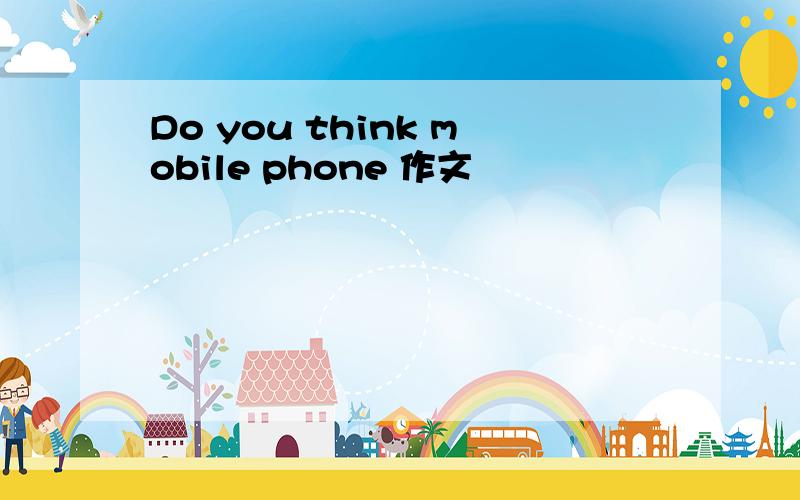Do you think mobile phone 作文
来源:学生作业帮助网 编辑:作业帮 时间:2024/11/19 15:12:44

Do you think mobile phone 作文
Do you think mobile phone 作文
Do you think mobile phone 作文
A mobile phone (also called mobile,cellular phone,cell phone or handphone) is an electronic device used for full duplex two-way radio telecommunications over a cellular network of base stations known as cell sites.Mobile phones differ from cordless telephones,which only offer telephone service within limited range through a single base station attached to a fixed land line,for example within a home or an office.
A mobile phone allows its user to make and receive telephone calls to and from the public telephone network which includes other mobiles and fixed line phones across the world.It does this by connecting to a cellular network owned by a mobile network operator.A key feature of the cellular network is that it enables seamless telephone calls even when the user is moving around wide areas via a process known as handoff or handover.
In addition to being a telephone,modern mobile phones also support many additional services,and accessories,such as SMS (or text) messages,email,Internet access,gaming,Bluetooth,infrared,camera,MMS messaging,MP3 player,radio and GPS.Low-end mobile phones are often referred to as feature phones,whereas high-end mobile phones that offer more advanced computing ability are referred to as smartphones.
The first handheld cellular phone was demonstrated by Martin Cooper of Motorola in 1973,using a handset weighing in at two kilos.In the year 1990,12.4 million people worldwide had cellular subscriptions.By the end of 2009,only 20 years later,the number of mobile cellular subscriptions worldwide reached approximately 4.6 billion,370 times the 1990 number,penetrating the developing economies and reaching the bottom of the economic pyramid.